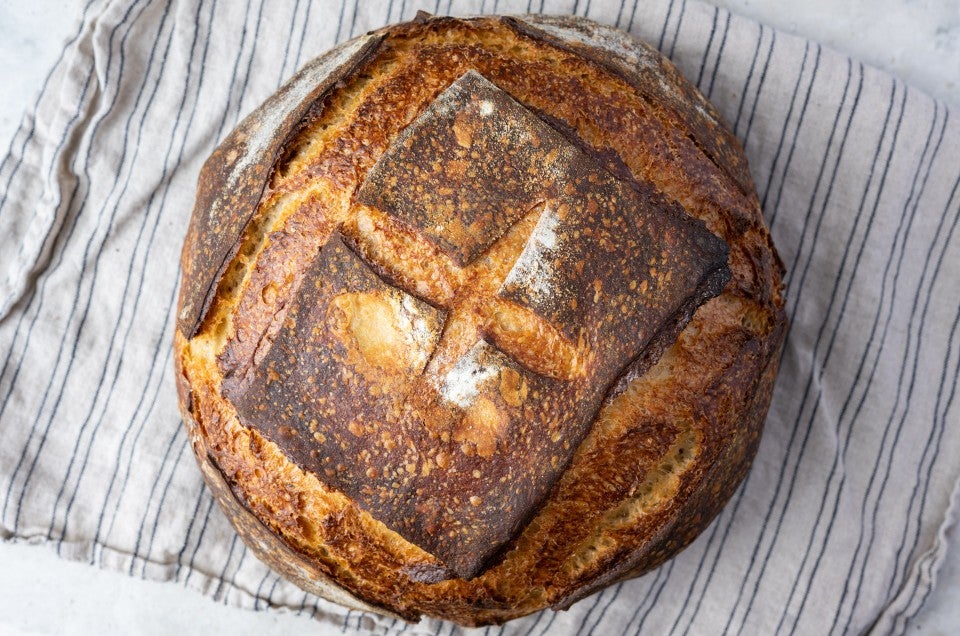


I’m a kneader. I love to get my hands in the dough, to fold it up and over and down into itself. I've been known to vigorously slap wet dough on the counter for many minutes to give it some order.
There’s a visceral joy in working bread dough, a therapeutic journey that starts with water and flour, and ends with a smooth dough and a reset attitude. But sometimes it’s nice to give it some distance, to go hands-off, to let your sourdough starter do the work. And in the end, a loaf of No-Knead Sourdough Bread will be just as enjoyable as one I not-so-gently transformed on the counter. I'll just have to find a different means for relaxing.
This recipe is as no-knead as it gets — it's no-fuss and no-worry. All you have to do is mix everything in the bowl (I like to use my hands here, lest they start to get too lazy), give the dough a few folds while it rises during bulk fermentation, and sit back to watch as it smooths out and strengthens over time. Then it's into the refrigerator for a cold overnight rise, and the next day the dough is ready — on your schedule — to shape, rise, and bake.
The result is a loaf with impressive volume, a mahogany crust, and a tight interior crumb that’s perfect for sandwiches or soups, and begs to be torn by hand at the dinner table.
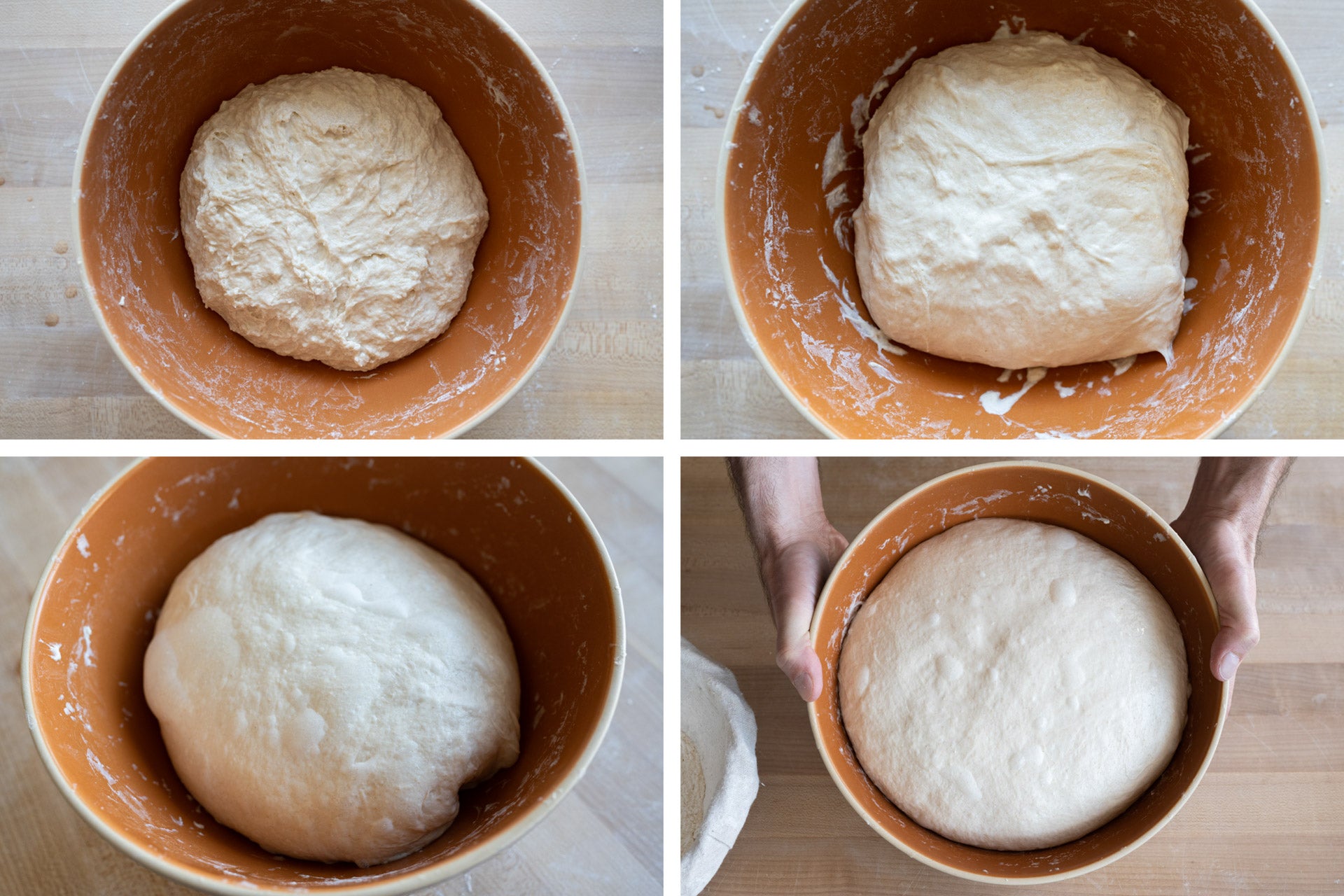
One of the most remarkable things about no-knead sourdough bread is how the dough transforms with only a little encouragement from the baker. It first begins with a sticky, shaggy mess just after mixing (upper-left image, above). Then you can see it begin to smooth out after the first set of stretch and folds in the upper-right image. Next, it starts to show signs of real strength and fermentation at lower-left, after the second set of stretch and folds. Finally, in the lower-right image from the next morning, the dough is smooth and well-risen, ready for pre-shaping. All without any kneading!
Let's get baking.
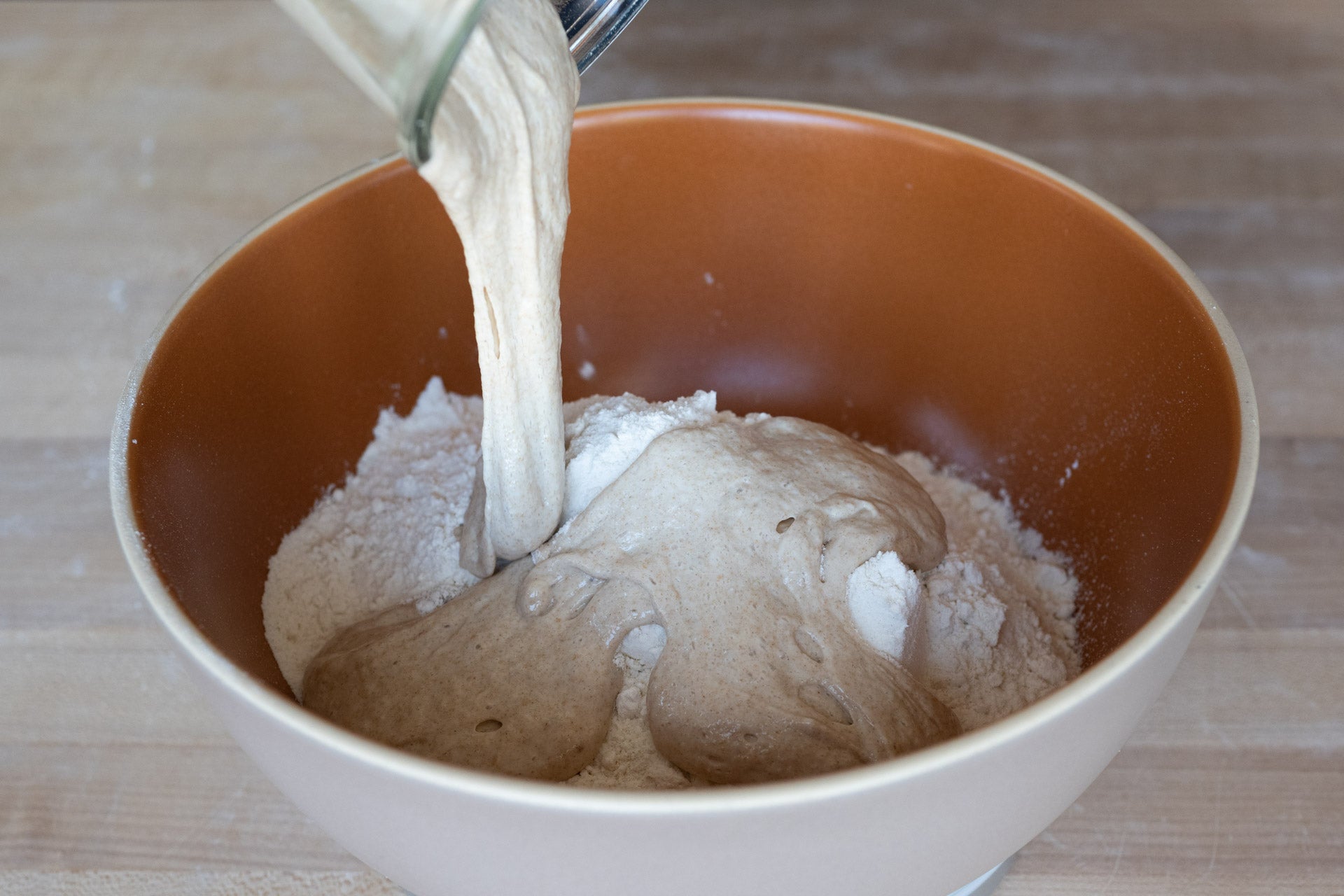
Let's start by gathering our ingredients:
Since this recipe uses no commercial yeast, it's important that you use ripe starter. To learn more about what that looks like, read our blog post: Ripe sourdough starter.
In a large mixing bowl, combine the ripe sourdough starter, water, flour, salt, and the optional diastatic malt powder. (I didn't use any malt powder in the loaves pictured here.) Mix the ingredients together using wet hands or a dough whisk.
Cover the bowl and let the dough rise for 3 hours. During this bulk fermentation give the dough three sets of stretch-and-folds: once after the first hour, again after the second hour, and once more at the end of the 3 hours.
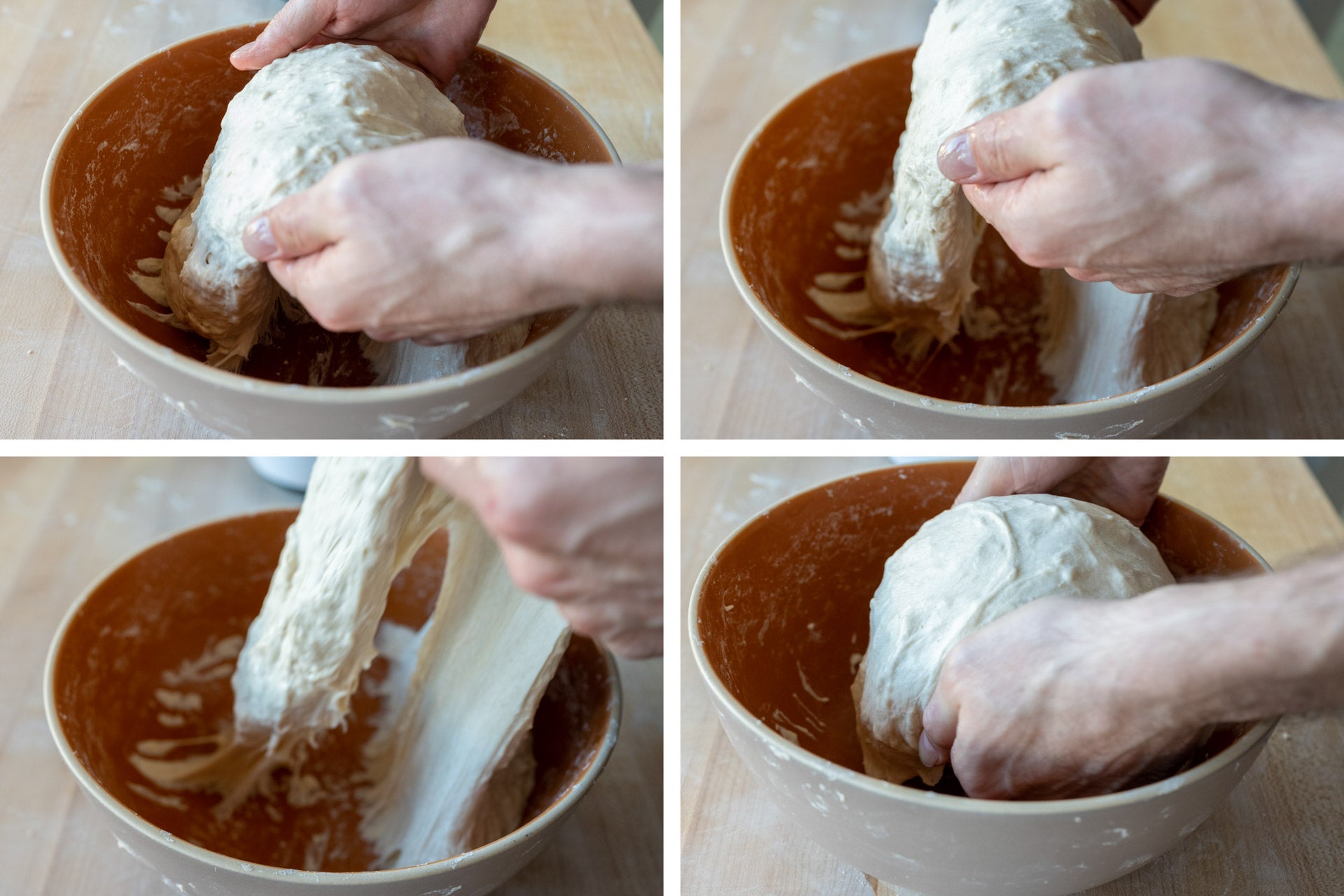
For each set of stretch-and-folds, use your wet hands to pick up the dough from the middle of the container or bowl, lift it about a foot high, then let one edge fold under to the center of the bowl. Rotate the bowl 180° and repeat a second time. Then rotate the bowl 90° to lift and fold one of the short sides. Finally, rotate the bowl 180° and fold the remaining side under. You should have a neatly organized ball of dough in the middle of the bowl. Cover the bowl and let the dough continue to rise.
After the third set of stretch-and-folds, cover the container and place it into the refrigerator for at least 8 hours or up to 48 hours (mine was in the refrigerator for 14 hours overnight).
When you’re ready to make bread, take the dough out of the fridge and scoop it onto a floured work surface. Preshape the dough into a round and let it rest for 30 minutes. During this time, the dough will warm up and start to expand outward on the work surface.
Ready your round proofing basket (or kitchen bowl lined with a tea towel) by lightly sprinkling on some unbleached all-purpose or bread flour or white rice flour to help prevent sticking. Alternatively, you can shape the dough following the instructions in the recipe if you want to make a long 13" loaf.
Lightly flour the top of the rested dough. Then use lightly floured hands and a bench knife (or dough scraper) to flip the dough over onto your work surface. The dough will feel strong and elastic and doesn’t need much shaping to keep it round.
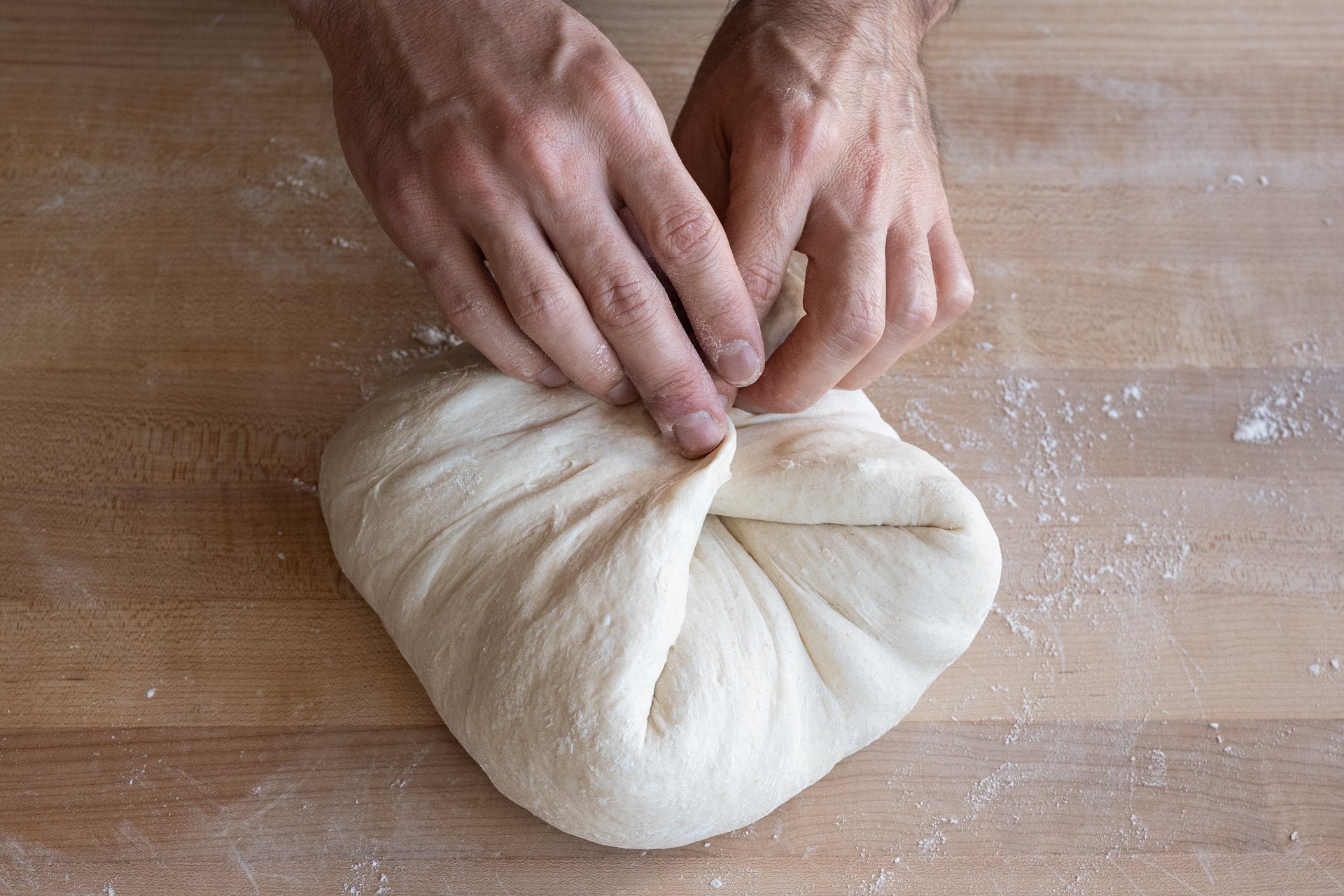
As seen above, I chose to simply “gather up” the dough by grabbing opposite sides and folding them over toward the middle at the same time (like folding up a handkerchief to hold a package in the middle). After the four sides are brought to the center, flip the dough over and finish tightening the boule as necessary. See my guide to shaping a boule for tips on this method and others.
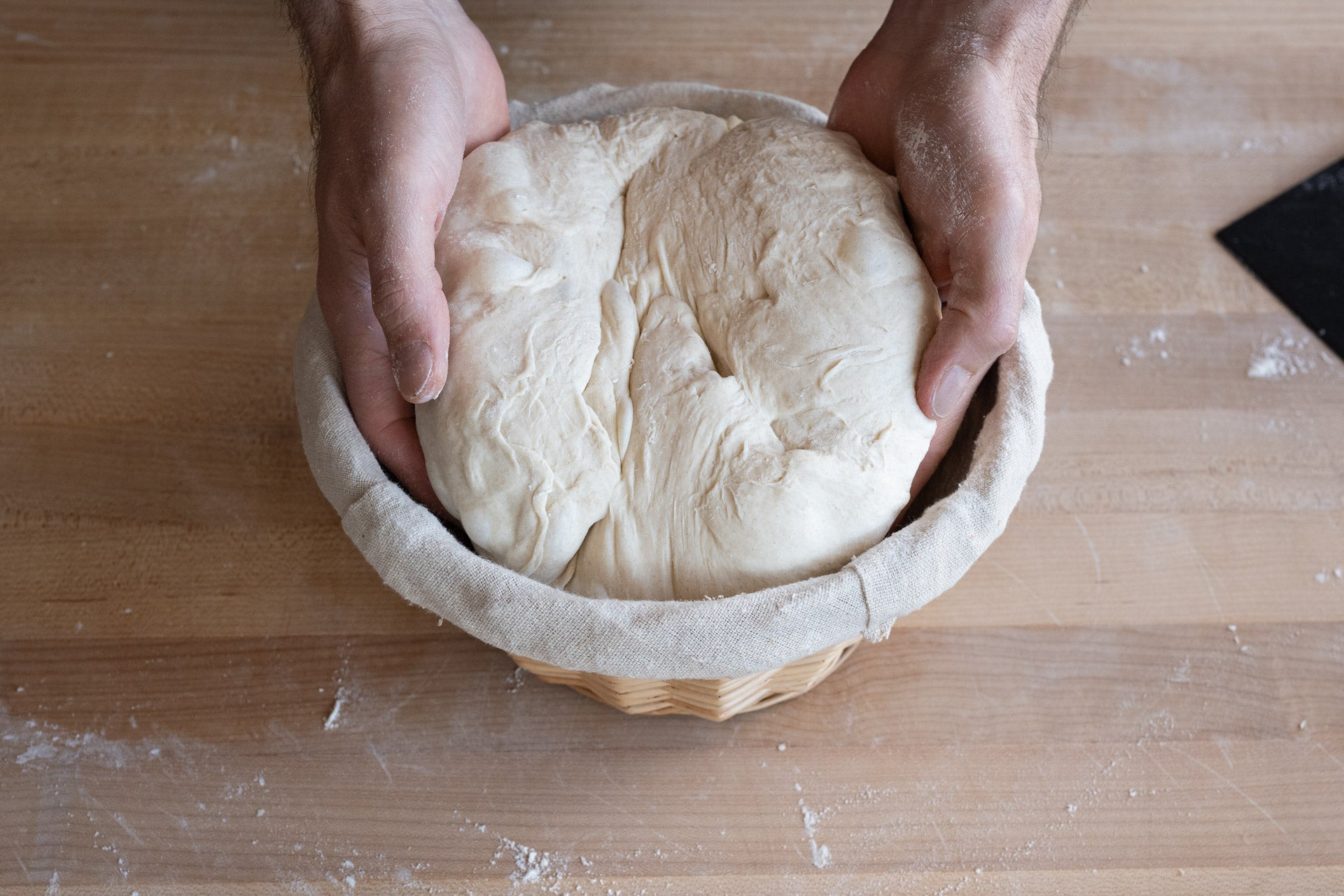 Using your bench scraper (or tool of your choice), swiftly pick up the dough and place it into the proofing basket, seam-side up. Cover the basket with plastic wrap or a reusable cover and seal shut.
Using your bench scraper (or tool of your choice), swiftly pick up the dough and place it into the proofing basket, seam-side up. Cover the basket with plastic wrap or a reusable cover and seal shut.
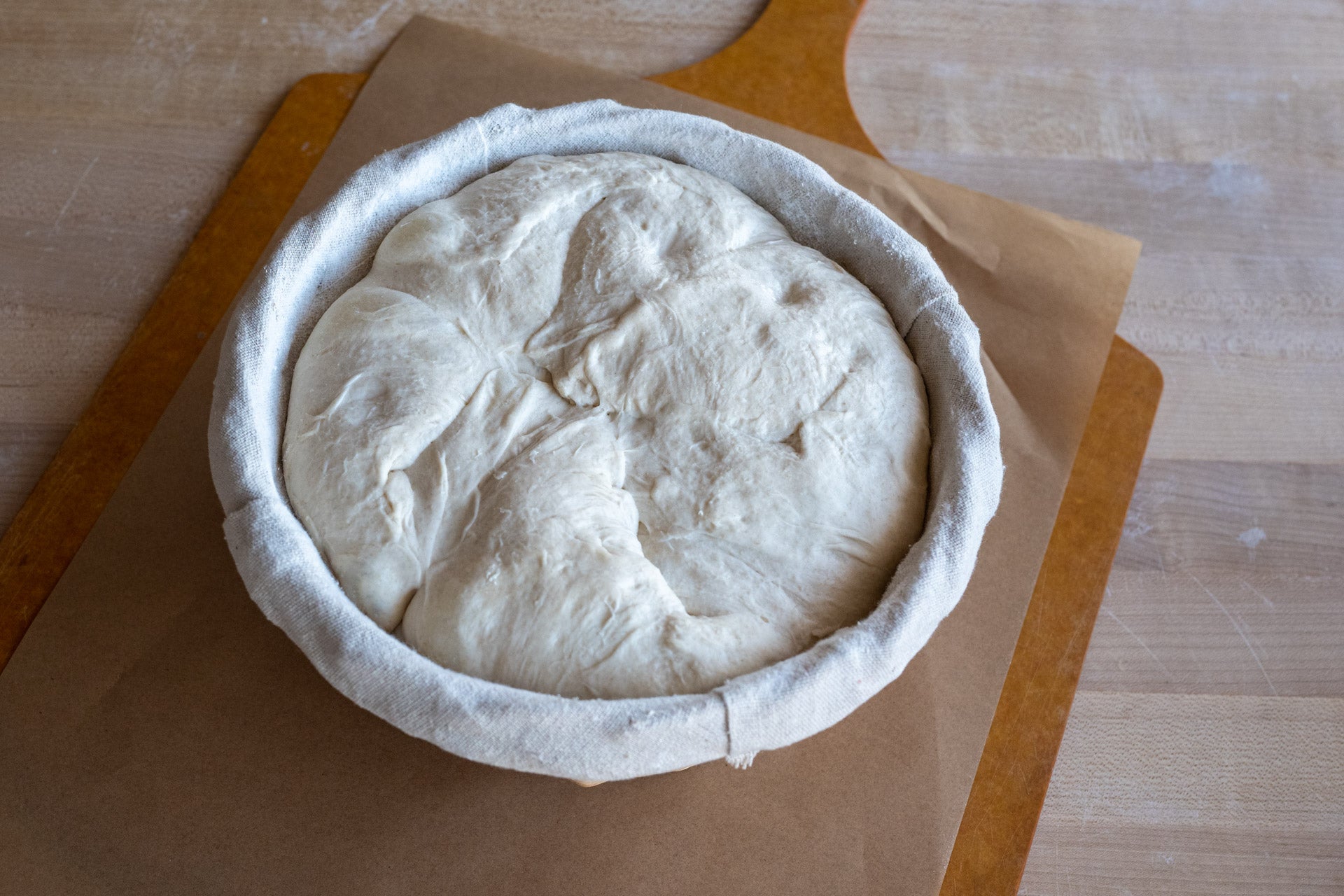
Let the dough rise for about 2 1/2 hours at room temperature. At the end of the proof, it should pass the “poke test” when it’s ready to bake: make an indentation with your finger and it will slowly — and not completely — spring back to the surface.
I baked this loaf in my combo cooker, but you could also use a Dutch oven (see King Arthur's post on baking with a Dutch oven). Preheat your oven with a Dutch oven inside to 500°F.
There are a lot of ways to score the dough and safely place it in the Dutch oven – this is my method. Cut a piece of parchment paper to fit over your proofing basket and place it on top after uncovering it. Then, place a pizza peel on top of the parchment to cover the proofing basket and flip the entire stack over. You should now have the dough on top of the parchment that’s on top of the pizza peel.
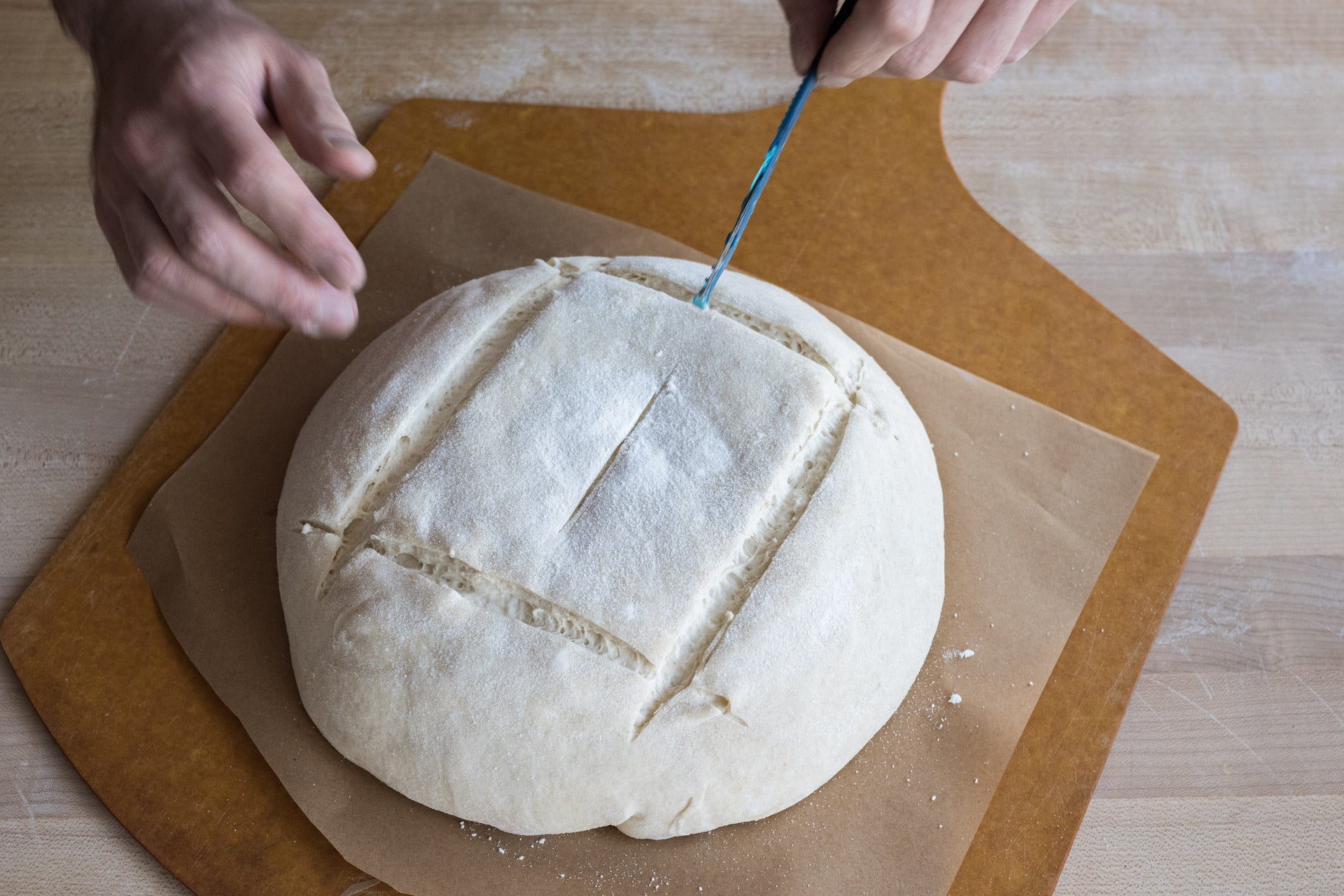
Using a sharp blade, or scissors, score the dough (see my dough scoring post for inspiration and instruction). Using oven-safe gloves, take out the preheated Dutch oven and slide the scored dough with parchment paper into the pot. (It’s OK to bake the loaf with the parchment paper inside the pot.) Return the pot to the oven and cover with the lid.
Reduce the oven temperature to 450°F and bake for 45 minutes, then remove the lid from the pot. Bake for an additional 10 to 15 minutes, until the crust is well colored and the internal temperature reads at least 210°F.
Once fully baked, remove the loaf from the oven and turn it out of the Dutch oven onto a rack to cool for at least an hour before slicing.
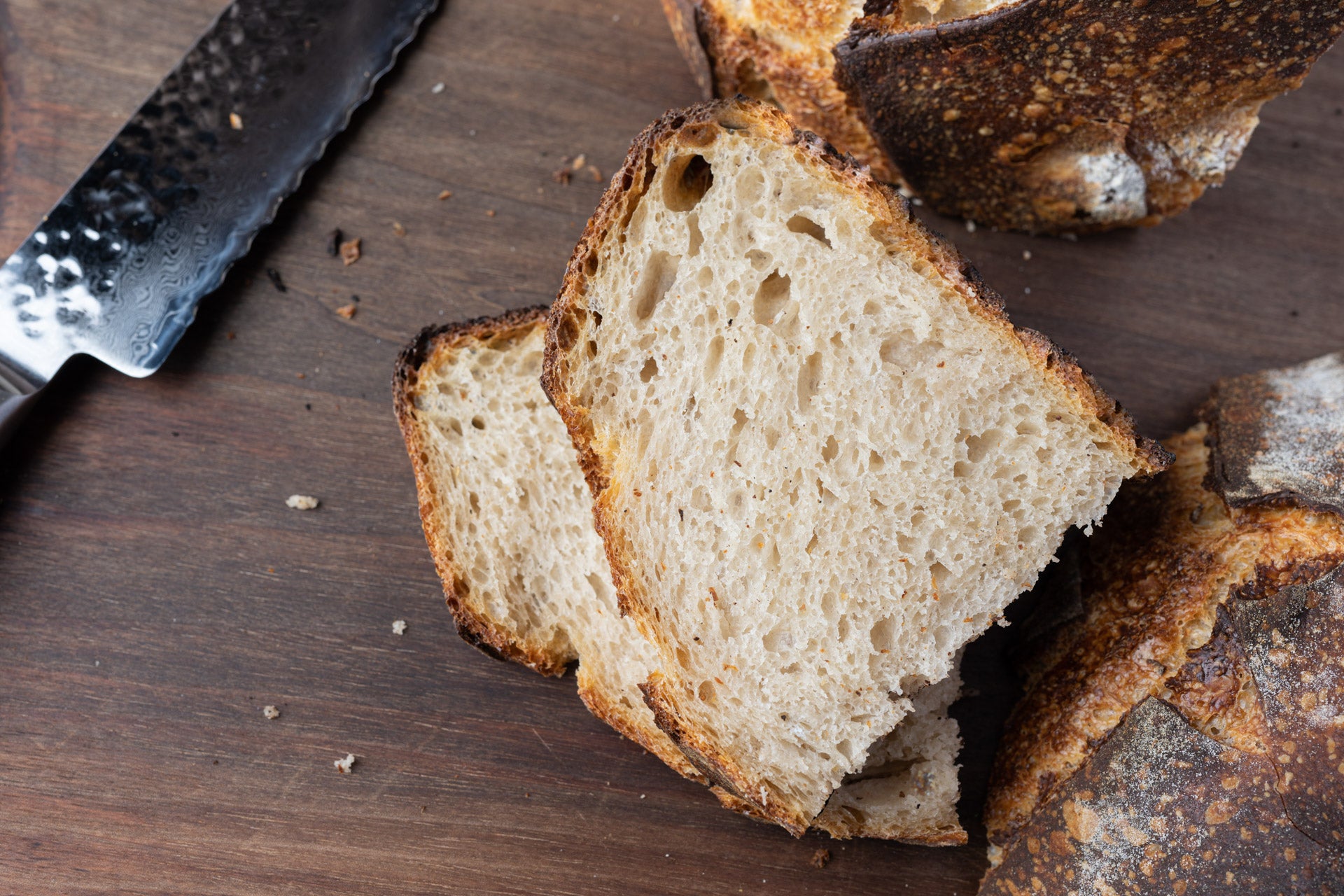
This loaf is delicious, with all the crunchy crust and creamy crumb of any of the others I've made — and it couldn't be easier. There's so much joy in getting your hands in bread dough to knead and work it until it's smooth and elastic. But I have to say, there's equally as much to be found in sitting back and witnessing a dough's transformation by giving it space and time to strengthen all on its own. It's amazing to watch and then delicious to eat.
Be sure to check out our other no-knead bread recipes. And for more great tips and techniques, head over to our Sourdough Baking Guide.